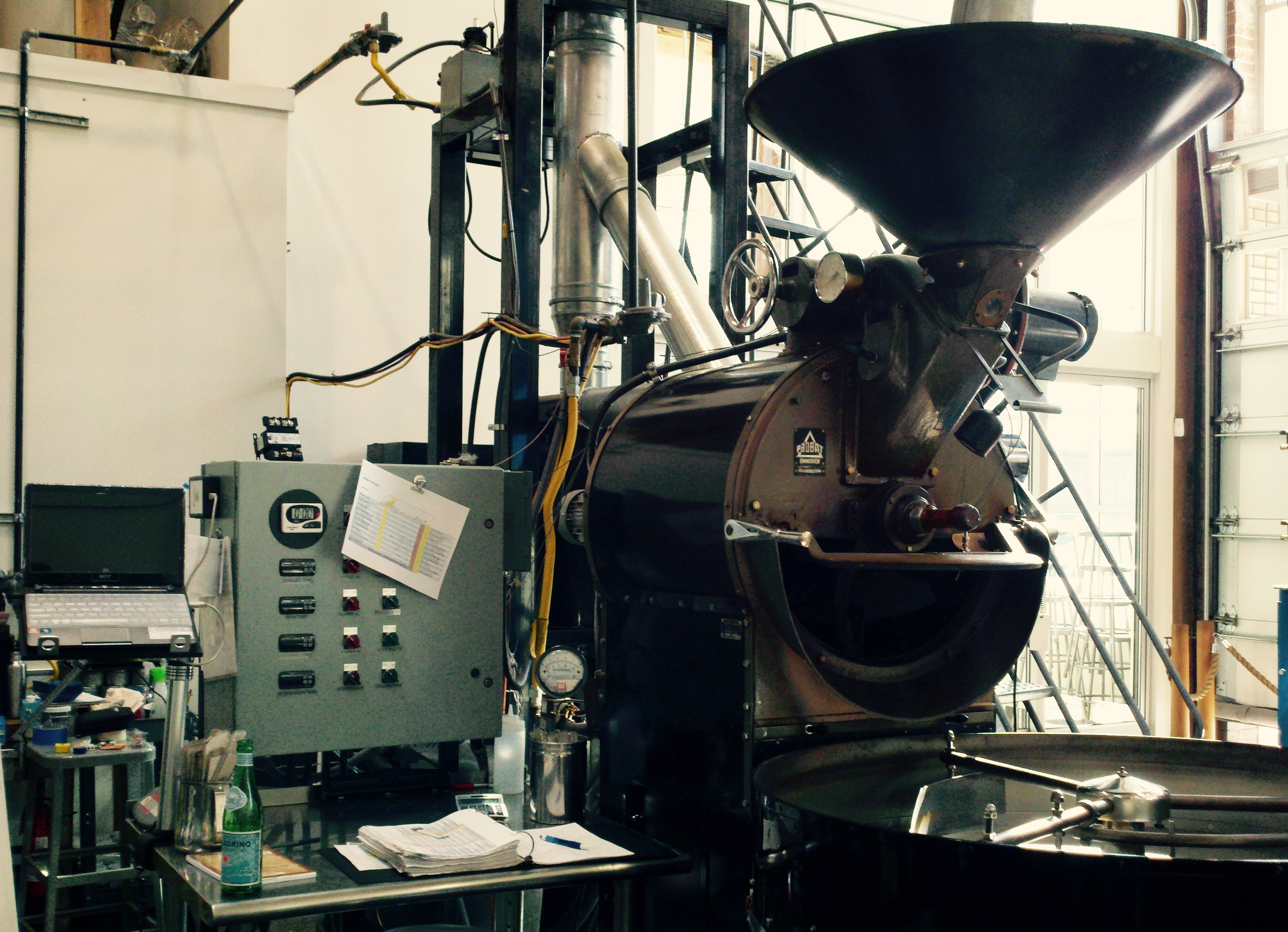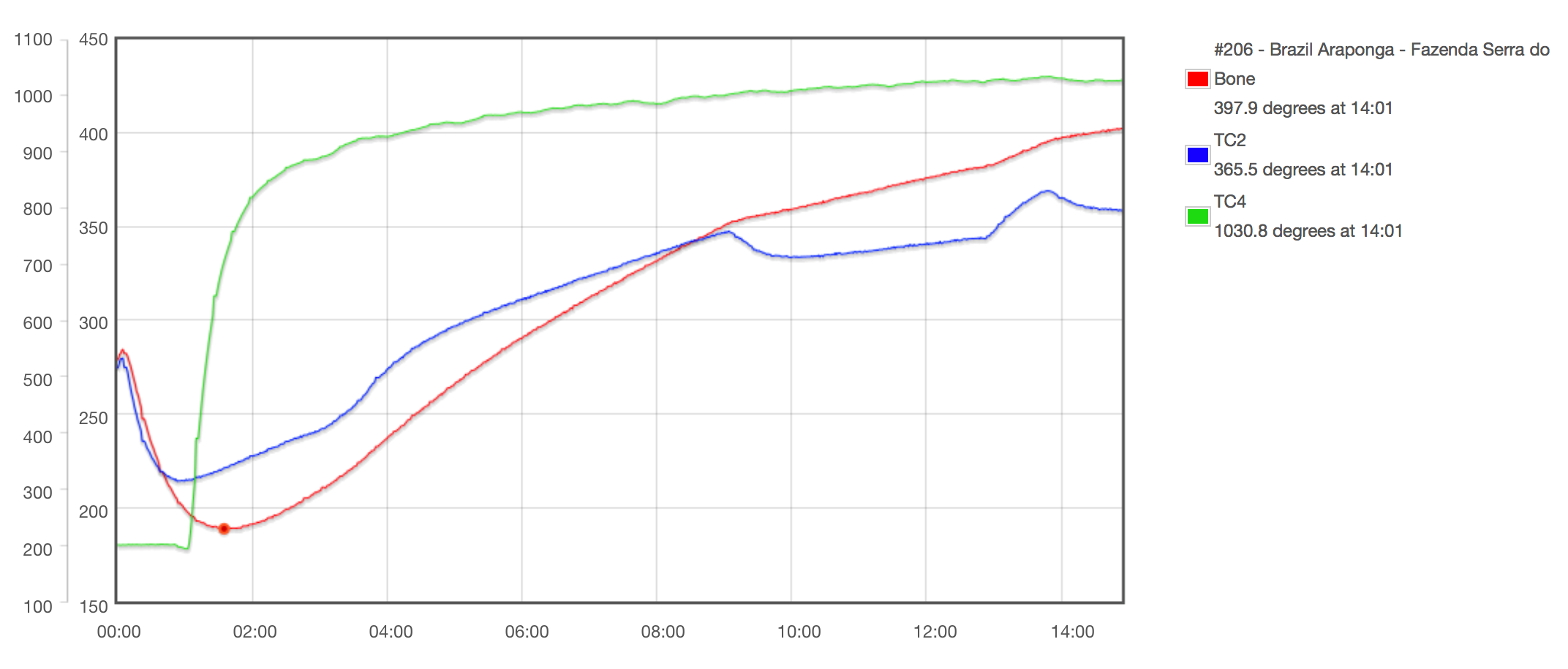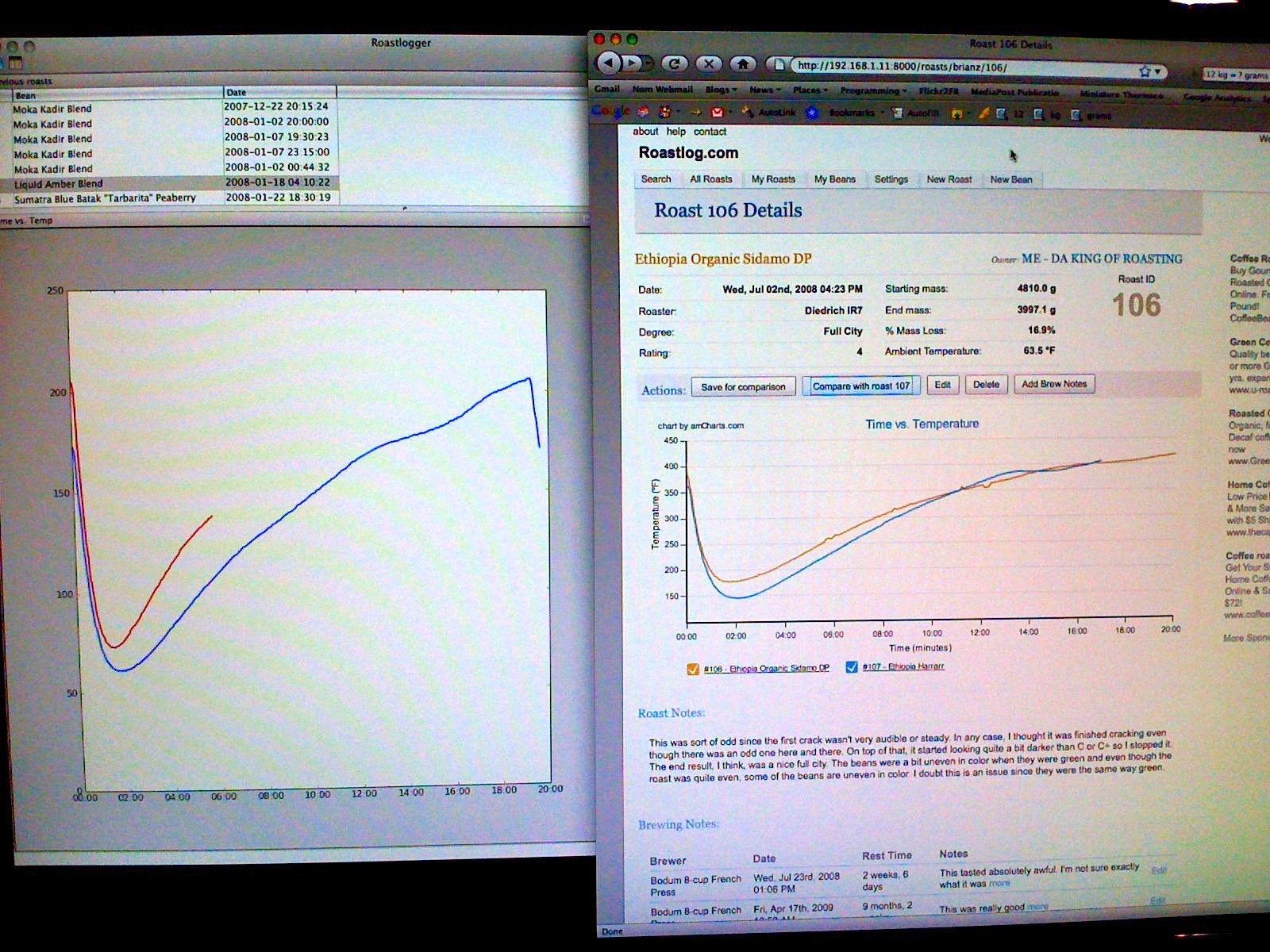We’ve long promoted RoastLog as software designed for running your business. So while RoastLog is probably best known as a tool for developing and logging roast profiles and managing green coffee inventory, did you know RoastLog is used by many roasters as part of their air quality management program?

Roasting coffee is fundamentally a combustion reaction and combustion by-products are created in the process, e.g., NOx, CO, CO2, SOx, formaldehydes and acetaldehydes, in addition to particulate matter, volatile organic compounds and organic acids¹. These emissions constitute air pollution. In the end, it’s all part of the reality of being a coffee roaster. Balancing the desire to help speciality coffee meet it’s full potential while still taking measures to minimize the carbon footprint of coffee roasting, is one of the many challenges we see our customers grappling with – especially in North America² and Europe³.
Afterburners are recognized as an effective means to reduce the particulate emissions of roasters. Roasting equipment continues to evolve and while technologies do exist that produce a cleaner roast, we all know that there is a significant portion of our industry that prefers using vintage roasters. Until newer technologies become more accessible/affordable – and more prevalent as a result – afterburners appear to be the state-of-the-art for those who want to reduce the emissions from their “tried and true” roasters. (Incidentally, none of this even touches the ongoing debate about diacetyl levels from roasting4,5)

Afterburner time/temp profile (green) logged simultaneously with roast profile.
Then, there is the matter of ensuring that afterburners are functioning to specification. Moreover, many locales and municipalities mandate logging afterburner temperature as part of air quality management record keeping. For years, chart recorders have been the go-to for this purpose. RoastLog replaces conventional chart recorders in a reliable and automated fashion. Worrying about running out of chart recorder paper or discs – only to find out several roasts or even days later – are a thing of the past. In RoastLog, afterburner temps are logged simultaneously with each roast, eliminating the need to manage chart recorder records separately from roast logs.
Chart recorders can be costly to maintain, finicky and consequently expensive if they malfunction. It’s been reported that some air quality districts issue daily fines when there are no afterburner records. If you use RoastLog, and operate in an area that requires proof that afterburners are operational during roasting, the ability to log afterburner temp is built-in and can be added by simply installing a thermocouple.
References:
-
Lee, MKC. (2015, May 4). Permit Handbook, Bay Area Air Quality Management Engineering Division. Retrieved November 12, 2015, from http://baaqmd.gov/~/media/Files/Engineering/Permit%20Handbook/BAAQMD%20Permit%20Handbook.ashx?la=en
-
Duggan J. (2013, July/August). Smoke in the Air – An Update on Emissions and Air-Quality Regulations. Roast Magazine, 22-32.
-
Neill, J. (2015, April 1). How Roasters Stay Ahead of Air Quality Rules. STiR Tea & Coffee Industry International. Retrieved November 12, 2015, from http://stir-tea-coffee.com/tea-coffee-news/how-roasters-stay-ahead-evolving-air-quality-rules/
- Rutledge, R. (2015, June 20). Coffee roasters’ health at risk from toxic compound, air samples suggest. Retrieved November 12, 2015, from http://www.jsonline.com/watchdog/watchdogreports/coffee-roasters-health-at-risk-from-chemical-compound-air-samples-suggest-b99505149z1-308183961.html
- Flavorings-Related Lung Disease – Coffee Processing Facilities (2015, September 29) Retrieved November 12, 2015, from www.cdc.gov/niosh/topics/flavorings/processing.html CDC (Centers for Disease Control and Prevention)
